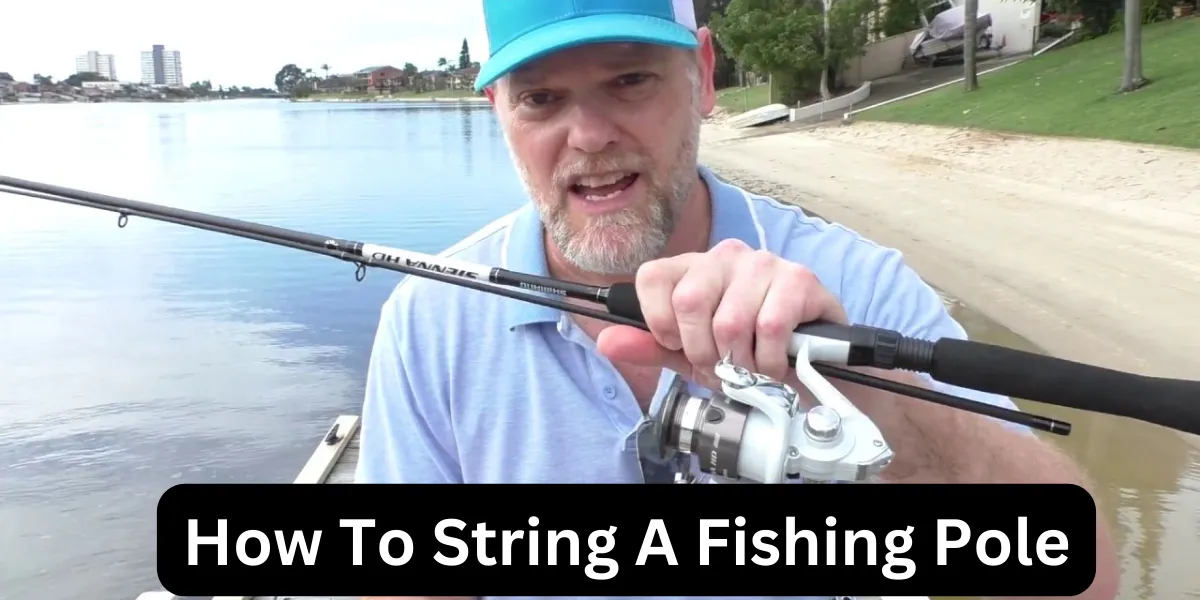Fishing is a cherished pastime for many, but to ensure a successful and enjoyable experience, it’s crucial to know how to string a fishing pole correctly. Whether you’re a novice angler or a seasoned pro, this guide will walk you through the process, ensuring your fishing line is set up optimally.
Understanding the Basics of Stringing a Fishing Pole
Before delving into the stringing process, it’s essential to understand the components of a fishing pole. The primary components include the reel, rod, and fishing line. The fishing line is a vital link between you and the fish, making its proper setup crucial for a fruitful fishing expedition.
Step-by-Step Guide to Stringing a Fishing Pole
Selecting the Right Fishing Line Choosing the appropriate fishing line is the first step How To String A Fishing Pole. Monofilament, fluorocarbon, and braided lines each have their advantages. Consider the fishing conditions and the species you’re targeting to make an informed decision.
Preparing the Reel Attach the reel to the fishing rod as per the manufacturer’s instructions. Ensure it’s securely fastened and aligned correctly.

Thread the Line Through the Guides Starting from the guide closest to the reel, thread the line through each guide towards the tip of the rod. This process reduces friction and ensures a smooth cast.
Securing the Line Tie an arbor knot or an appropriate knot recommended for the chosen fishing line onto the reel’s spool. Make sure it’s tight to prevent slippage during your fishing expedition.
Spooling the Line Carefully spool the line onto the reel, ensuring it lays evenly across the spool. Have a friend hold the line’s tag end to maintain tension while spooling.
Adjusting Tension Proper tension is key to preventing line tangles and bird nests. Adjust the tension on the reel as you spool the line, ensuring it’s neither too loose nor too tight.
Testing the Setup With the line properly spooled, give your setup a few test casts to ensure everything functions smoothly. Make any necessary adjustments before hitting the water.
Maintaining Your Fishing Line
After stringing your fishing pole, it’s important to regularly check and maintain your fishing line. Inspect for signs of wear, such as nicks or frays, and replace it if necessary. Additionally, consider restringing your pole at the start of each fishing season to maintain optimal performance.
Stringing a fishing pole might seem intricate at first, but with the right knowledge and practice, it becomes second nature. By following these step-by-step instructions, you’ll be equipped to string your fishing pole accurately and embark on memorable fishing adventures with confidence.
Avoli Fish and Motha Fish: A Brief Overview
Avoli fish, also known as Indian mackerel, is a popular choice in Indian and South Asian cuisines. With its distinct flavor and high omega-3 fatty acid content, avoli fish is not only delicious but also offers potential health benefits. It’s often prepared by marinating and grilling, bringing out its rich taste.
Motha fish, commonly referred to as the pearl spot fish, holds cultural significance in the Indian state of Kerala. Its tender white flesh, adorned with subtle flavors, makes it a sought-after delicacy. Often marinated with indigenous spices and herbs, motha fish is traditionally cooked wrapped in banana leaves, heightening its aromatic appeal.
In conclusion, both avoli fish and motha fish contries and culinary versatility.
bute uniquely to culinary landscapes, delighting seafood enthusiasts with their exceptional tast







